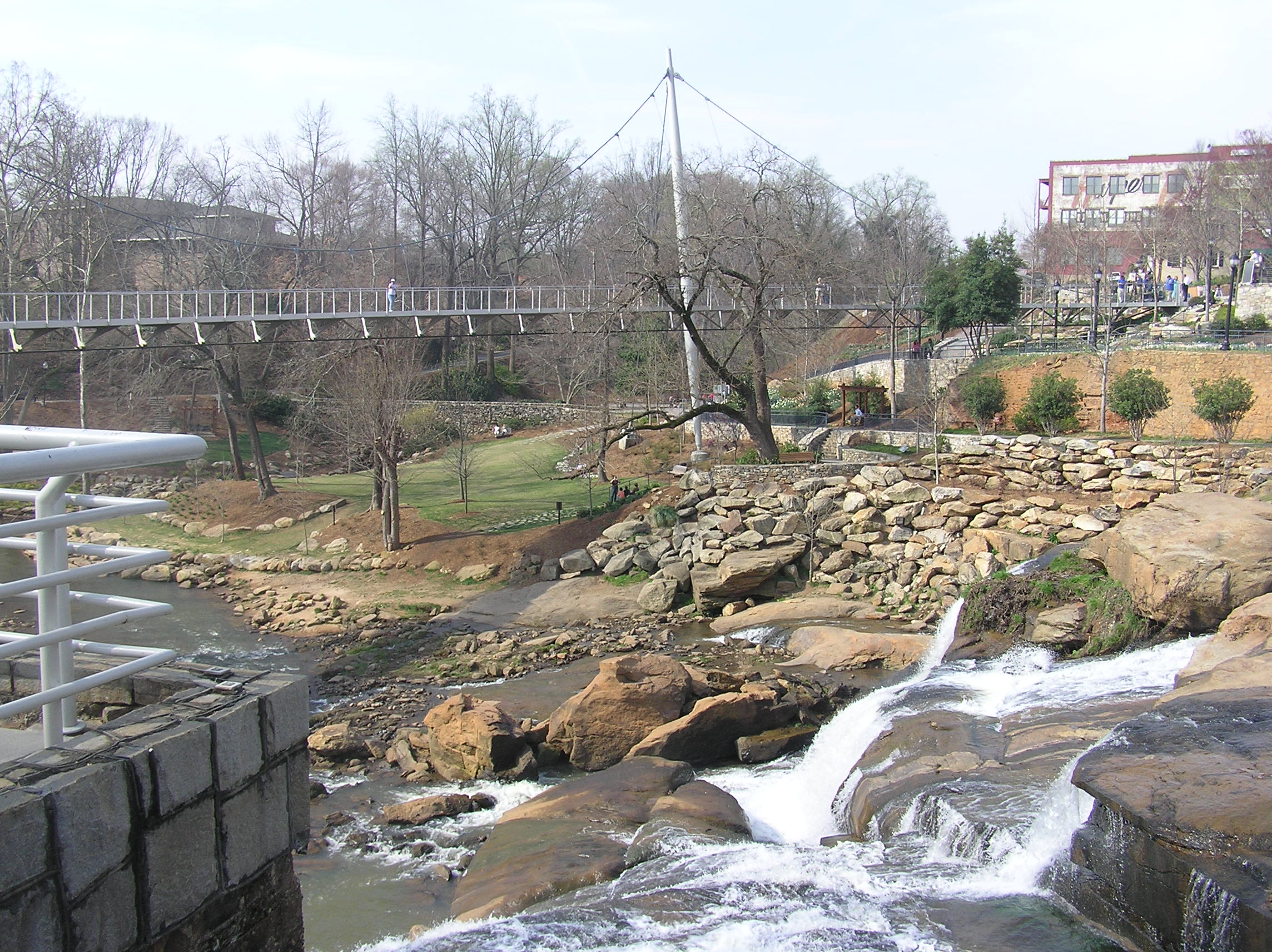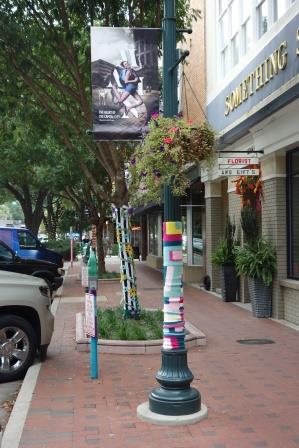A perfectly good question for city officials to ask is this, according to one community engagement expert: Where's the fun?

Falls Park on the Reedy River in Greenville sets the city apart.
"Nobody loves a city because you fix potholes for them," said Peter Kageyama, a self-proclaimed "city love guy," community development expert and author. "Nobody loves a city because you provide the basic elements of police, fire and paved roads. Of course you have to do that, but that is not why people love your cities."
People's most basic expectation is for a city to be functional and safe. But one trick to creating livable, loveable cities, where people of all generations and walks of life feel an emotional connection, is to define and foster a city's authenticity.
During his presentation at the Municipal Association's Annual Meeting in July, Kageyama highlighted yarn-bombing projects in cities as an example—knitting enthusiasts leave colorful woven creations on lamp posts and other public places.
In the City of Columbia, knitters gave the yarn-bomb treatment to trees, a parking meter and bike rack from September through October.

A yarn bombing decorates Columbia's Main Street.
Artist Bohumila Augustinova led the project, which involved more than 20 knitters. She said One Columbia for Arts and History, a nonprofit organization that promotes tourism in Columbia, worked with city officials to make sure the public art project complied with all ordinances.
Of the yarn bombing, Augustinova said: "I think the city already had a lot of sparkle, but it does (help). … For how small a city it is, it's incredibly creative and supportive of the arts, so doing something like this just supports that and shows that, 'Yeah, we are a really creative city and we like cooperation.'"
Private donors and One Columbia, which receives hospitality-tax revenues, contributed money for the project.
"It's a neat way to add a lot of color to the street … and to change up their landscape on their walk to work," said Lee Snelgrove, executive director of One Columbia.
Yarn is a fine medium for public art. But so is paint.
Kageyama mentioned another city on the west coast that commissioned an artist to put a paint-by-number design on an overlooked wall. "It's not necessarily high art, but it's highly interactive," said Kageyama, adding that the participatory nature of a creative project invites people to come together. It also inspires a "we painted that" response when residents drive or walk past the final product.
Other South Carolina cities, too, have ways to show visitors and residents what distinguishes them. While some efforts are relatively low cost, others call for greater measures.
Lower-cost ideas
While construction was underway on the Hampton Inn and Suites and the Mantissa Executive Suites and Spa, the City of Hartsville built a "construction wall," and invited residents and Coker College students to adorn it with paint and comments. And in Anderson, the city is marked by 6-foot-long fiberglass fish, donated painted pianos, and a century-old generator, which celebrates Anderson's distinction as South Carolina's first electric city.
Greater measures
Kageyama pointed to Falls Park on the Reedy River in downtown Greenville to show how removing a bridge more than 10 years ago generated a new source of social capital. In 2002, the Camperdown Bridge was taken down and plans began to develop 20 acres of gardens and install a curved suspension bridge. Falls Park is now a venue for outdoor yoga, weddings and other social activities.
